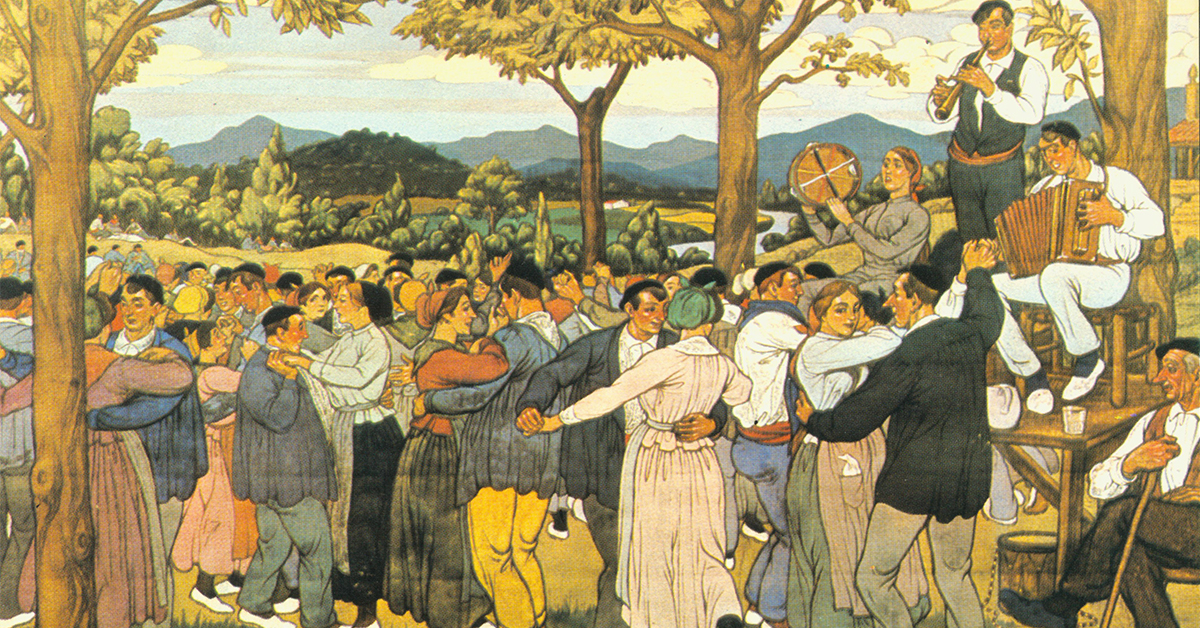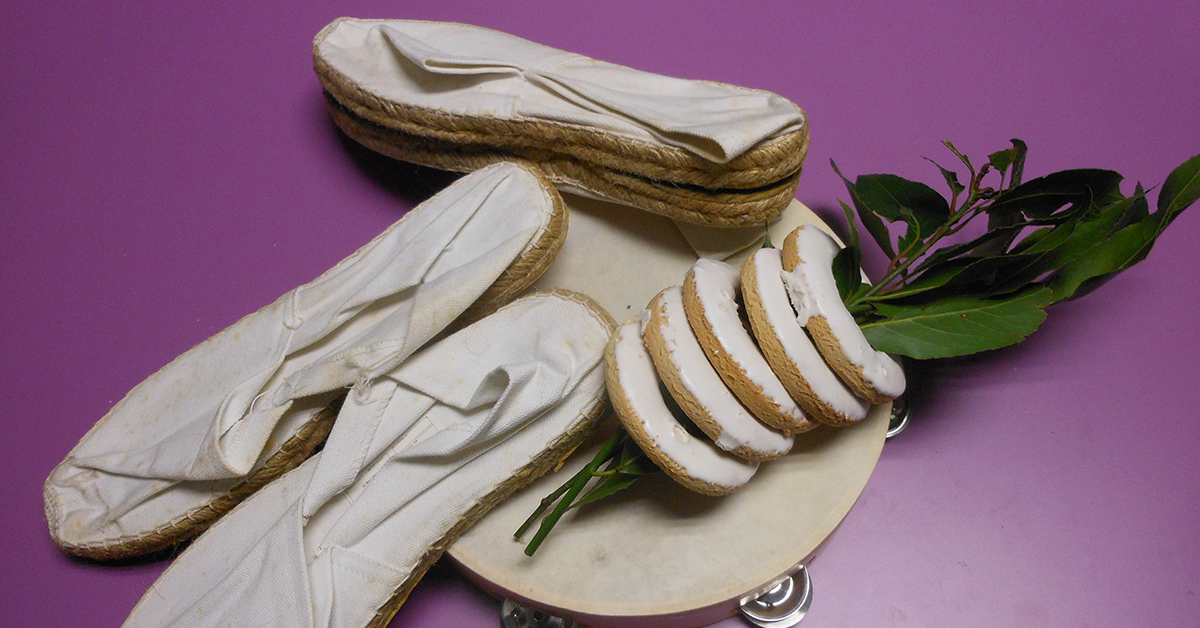Archives

Postcard entitled “Romeria-Erromeria” (Pilgrimage festivities), illustrated by the painter José Arrue.
Summer is the time of festivities and dancing is part of those celebrations. Even though few dancers are seen in the town squares today, it was not so long ago that people wanted to dance, but were banned from doing so “in hold” or waltzing as it was also known.
During the Basque Festivities organised in Areatza-Villaro (Bizkaia) in 1897, J. Larrea, the chronicler for El Nervión newspaper, wrote the following on 12 September: “… and as regards the social mores of Arratia, they cannot be overemphasized enough; suffice it to say that waltzing was forbidden during the open-air festivities as part of the pilgrimage in Arteaga (Artea), and it is the same case in this charter town, as the “mutilleks” (young men) were not allowed to hold the “neskatillaks” (young women) in their arms to dance to the sound of the drum”.
The term “romeria” (erromeriak) or pilgrimage originally referred to the pilgrims’ journeys to Rome or other centres of Christianity. By extension, it has come to mean, in popular tradition, the festivities where people gather in meadows or on hillocks around certain chapels or shrines. It also encompasses the influx of pilgrims, religious services or festive events involving the pilgrims and the general public, at those sacred or devout places. Pilgrimages are organised in periods of good weather and usually take place in spring and at the end of autumn.
(more…)



